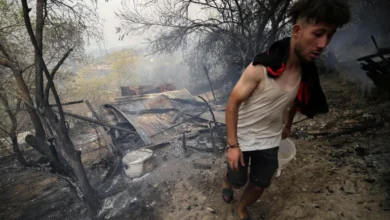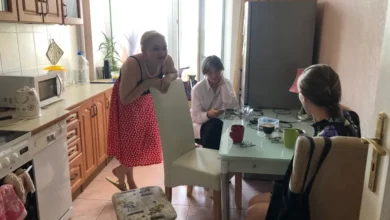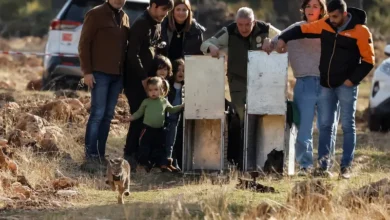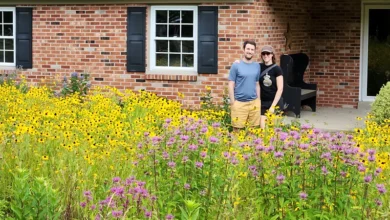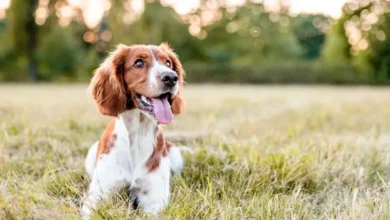‘Record-breaking’ corncrake count on Rathlin Island
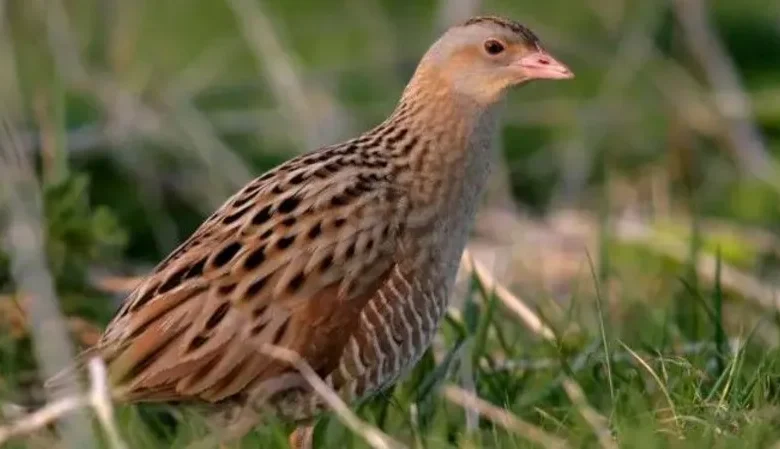
The presence of six calling male corncrakes on Rathlin Island this breeding season has been hailed as a “record-breaking” milestone.
The Royal Society for the Protection of Birds Northern Ireland (RSPB NI) has said it is the highest number recorded in recent memory and marks a huge step in the fight to protect the bird species.
Since the 1970s, the Corncrake population has declined significantly, leading to the species being red-listed in both the UK and Republic of Ireland.
The record number of male corncrakes being recorded on the island this breeding season has been largely attributed to the efforts of an ongoing RSPB NI volunteer-led project.
The Giving Corncrake a Home Project, which was launched back in 2010, helps provide tall vegetation for corncrakes to hide in.
Over the past 15 years, the charity’s staff, volunteers, and local landowners have worked to recreate suitable breeding habitats for the corncrake on the island.
This includes planting nettle rhizomes to provide the early, dense vegetation cover corncrakes need to nest safely.
The project has been hailed as helping the bird return to Rathlin Island in 2014.
Why are nettles important for corncrakes?

Corncrakes are a secretive bird that prefer to nest in cover.
When they return from their winter in Africa, tall vegetation on Rathlin Island is in scarce supply.
Therefore, nettles are chosen due to their fast-growing nature.
Although nettles are native to Rathlin, more are required from sites across Northern Ireland in order to create the ideal habitat around the field border.
Corncrakes typically have two broods per breeding season and will also nest in the centre of the field once the grass grows.
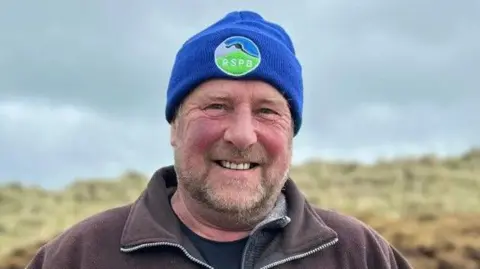
Liam McFaul, an RSPB warden on Rathlin Island, said it has been incredibly sad to watch the corncrake population decline over the decades, and spoke of the significance of this year’s record count.
“When I was growing up, corncrakes were everywhere, you couldn’t step outside without hearing them. Now, even one call is rare.
“That’s why creating early cover with nettle rhizomes is so important.
“Without it, corncrakes could have disappeared from Rathlin for good.”
How to identify a corncrake
Corncrakes are classified in the UK as Red under the Birds of Conservation Concern 5.
This secretive bird gives a rasping rattle as its breeding call – mostly heard at night, sometimes for hours on end.
They prefer to nest in meadows and hay fields in areas with lots of tall plant cover, where they spend most of their time hidden from view.
They are summer visitors to Northern Ireland and parts of Scotland, wintering in central and southern Africa.
Corncrakes are round-bodied and long-necked, like a water rail, but with a short, stubby bill.
The plumage is mostly yellowish-brown, with darker streaks on the back and pale bars on the flanks. There are grey patches on the throat and above the eye.
‘Now aiming for ten’
RSPB NI’s east area manager, Claire Barnett, has been part of the project for more than a decade and reflected on her time working as a senior conservation officer when she first heard the returning corncrake calls on the island.
“I remember being out on Rathlin in 2014, walking the fields and hearing the corncrake call as they were becoming re-established,” she said.
“It was a moment of hope, but I never imagined we’d one day be hearing six – it’s incredible.
“This is down to years of hard work by our team, the community and volunteers.
“We’re aiming for ten calling male Corncrakes on Rathlin, and with the right habitat and care, we’re confident we can get there.”




